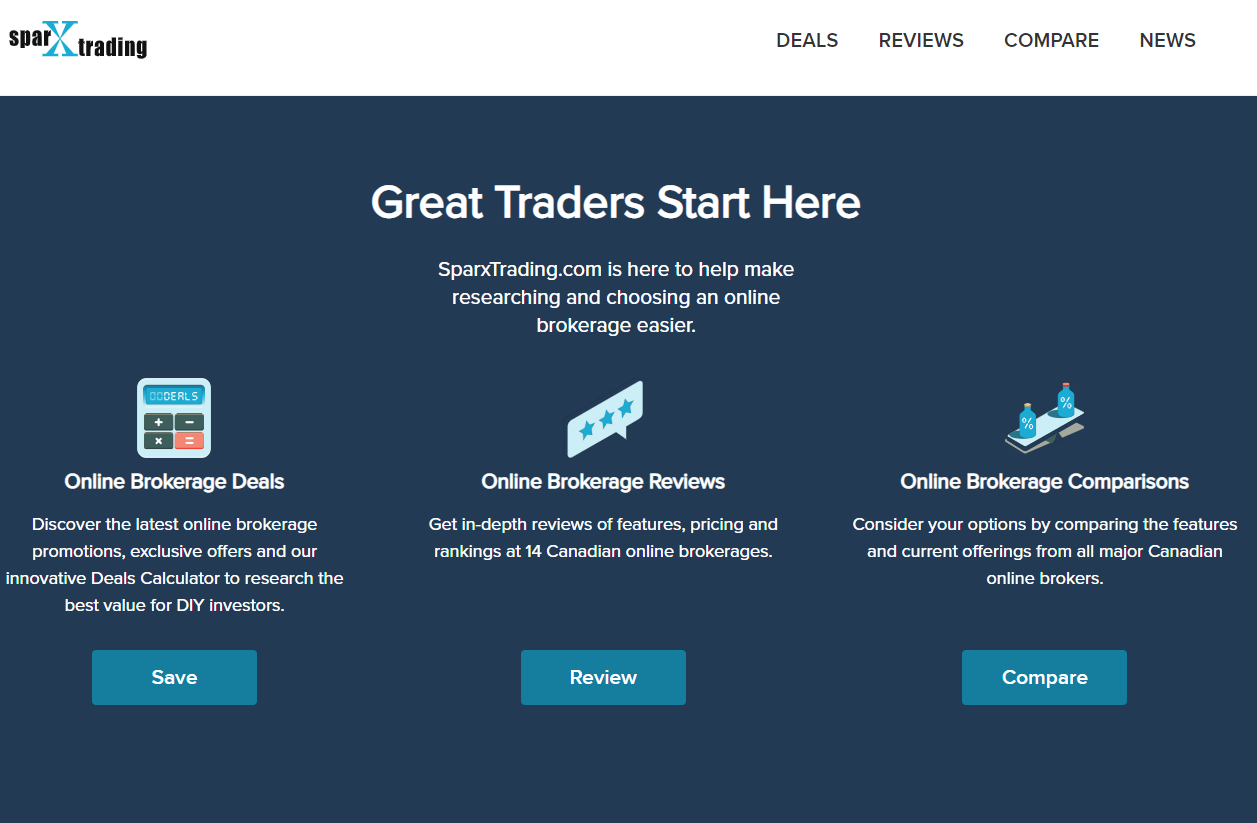
One look at the past week in March and daylight savings isn’t the only reason to be losing sleep. From the excitement of Bitcoin’s highs to the now-constant (like Pi Day) news of platform outages to Beyoncé’s smashing of a Grammy record, March has been full of surprises. Interestingly, it seems like Canadian online brokerages also picked up on this theme heading into the Ides of March.
In this edition of the Weekly Roundup, we review some of the newest features to sprout up at Canadian online brokerages and analyze the shifting landscape of financial services in Canada. From there, we dive into some strange and interesting signals surrounding the “new” retail investor and look at how they are impacting online investing. As always, we’ve got some interesting and…colourful…commentary from DIY investors in the forums and from Twitter.
Out to Launch: New Features Sprouting Up in March
March is synonymous with spring and, therefore, also with new and exciting things.
This year, there’s already much to look forward to. However, when it comes to the Canadian wealth management landscape, there are some interesting developments sprouting.
BMO InvestorLine Launches adviceDirect Premium
Starting first with BMO InvestorLine. This past week, BMO InvestorLine formally announced the launch of a new premium tier of their adviceDirect service offering. The new feature, adviceDirect Premium, is geared toward clients with $500,000 or more in investable assets and offers a range of new functionality, most notably enhanced planning and research resources.
Now over eight years old, adviceDirect has often occupied a niche role in the world of online investing. As a hybrid between the world of DIY investing and digital advice, it has evolved a number of times to find its identity as the “middle child” of the wealth management suite offered by BMO.
The timescale of the product is especially relevant given the context of what the product offers and the current state of online investing. AdviceDirect is unique in that online investors can contact a licensed investment representative to review their portfolio and to get additional insight on possible investment decisions. Although the investment rep does not necessarily have to put orders through, the key value driver is that a DIY investor can get an informed opinion about their particular investment picture and goals.
Prior to the mad rush into the markets instigated by COVID-19, the need for orientation to the markets was somewhat measured. Passive investing was all the rage, and the numbers of DIY investors who were new to trading or who wanted to get into investing were increasing at a manageable pace.
Fast forward to today, however, and the wealth management industry – in particular the online investing space – is filled with chatter centred around the lack of experience of investors entering the market. This past week, for example, a pair of articles essentially found that the kinds of questions new investors were seeking answers to reflected a significant lack of knowledge about the world of investing online. Of particular note was the following stat: “A Deutsche Bank survey found that almost half of U.S. retail investors were completely new to the markets in the past year. They are young, mostly under 34.”
While the Canadian online brokerage market is different, the overall trend of newer investors coming to online investing is likely similar. The takeaway: There are lots of new investors in the market who don’t quite know what they have gotten themselves into.
It is interesting, then, that adviceDirect has chosen to launch a premium product at this point. On the one hand, a premium tier is consistent with an overall trend for BMO InvestorLine to seek out clients with larger deposit amounts or investable assets. At a macro level, however, the timing couldn’t be better to bring on clients who would likely benefit from having a “voice of reason” available for consultation before making some big investing decisions. Investor forums now routinely have stories of DIY investors who bet big and lost considerable amounts of money by taking risky trades. Those risks far outstrip the management fees charged by the adviceDirect platform.
The online investing world has typically been a place where either you’re a DIY investor or you’re not. BMO InvestorLine’s latest enhancement to its long-standing hybrid model offering might have finally found itself ready for a world where “DIY” doesn’t imply an all-or-nothing proposition. The challenge, however, is whether or not adviceDirect can ramp up its marketing and appeal to DIY investors faster than other online brokerages or roboadvisors can.
Questrade Launches Mortgages
This past week, the line between online brokerages and banks got a little blurrier as two wealth management firms continued their push into banks’ traditional territory of mortgages and money transfers.
Starting first with mortgages. Questrade, which acquired Community Trust Co. in 2019, has been quietly building up to a formal launch into the world of offering mortgages. That day, it seems, has arrived, and last week, Questrade clients received the formal announcement that QuestMortgage has officially gone live.
For the moment, QuestMortgage is open to Questrade customers only. Given the current frenzy over real estate in Canada, however, it is likely that the timing of launching to all Canadians is on the minds of the folks at Questrade. The QuestMortgage prime rate is 2.45% at the time of publication, and a five-year fixed-rate closed mortgage ranges between 2.04% to 2.24%.
While these rates are higher than at other firms, the reality is that there will likely be a curious set of existing clients who either know and/or like Questrade and would be willing to see what a mortgage through QuestMortgage might be like. That said, one of the challenges of the bank-owned online brokerage approach is that service in one category of product tends to impact the decisions and perceptions in another.
This past week, for example, Questrade’s platform suffered an outage during trading hours, and, as a predictable result, lots of clients were understandably angry – including to the point of wanting to leave. If there are hiccups and issues during this rollout with Questrade clients, it could alienate existing clients, giving them cause for concern with the brand as a whole.
Wealthsimple Relaunches Cash Solution
Another big development in the world of money for Canadians came from Wealthsimple.
Typically, we would be referencing Wealthsimple in the context of online trading or even online investing through their roboadvisor service. However, this past week, Wealthsimple published an article in their Wealthsimple Magazine and sent out an email campaign highlighting their Cash app, in an effort (it seems) to ramp up the awareness of this new(ish) product.
What’s so special about Wealthsimple Cash? To start, it promised to enable instant money transfers between parties. And, going way back to the announcement of the cash feature in 2020, there are some other key features such as bill payments, ATM cash withdrawals, and a highly sought-after physical card.

As with the comment about Questrade venturing into mortgages, however, the rollout and client experience with one part of the brand will invariably influence the perception of the brand as a whole. There are now several apps in the Wealthsimple ecosystem, each representing a possible relationship with a consumer. As a result, a negative experience in one of these areas has the potential to cause someone to leave the whole set of products.
In the case of the Wealthsimple Cash app, there is already skepticism and negative sentiment brewing – in part relating to the delay in the rollout of the promised features that the Cash app was launched with. While Wealthsimple had hoped to be transformative with the technology and user experience (and, to be fair, the proposed user flow in terms of sending cash seems straightforward), ultimately it comes down to reliability and execution, which is where the current reviews and reactions from Wealthsimple clients stem from.
Despite the slow rollout of the most sought-after features, Wealthsimple is clearly going after the business domain of the traditional big banks in Canada. The convenience factor that emerges when individuals are able to manage multiple parts of their financial lives in one easy-to-use platform is a very powerful force. Equally powerful in Canada, however, is inertia. Individuals who are content to stay where they are because of a perceived amount of effort to change are not yet hearing the kind of enthusiasm about the Wealthsimple Cash feature that would induce them to switch. Though the banks might be safe for now, it’s clear(er) that the winds of change are starting to blow.
Neighbourhood Watch
If there’s one thing that living through 2020 has taught us, it’s that these are really unusual times. Just when traditional wisdom implies that things ought to zig, we see them zag. Nowhere has this been more true than in the world of DIY investing. What has started to emerge from a series of discussions about the world of online investing appears to be a sense of impending doom – almost as if there’s an iceberg in the water and the “new” stock market is the Titanic.
To be fair, there are perennial pessimists when it comes to the stock market. Since the Great Financial Crisis of 2008/9, naysayers have been waiting and calling for a massive correction in the markets. The same could be said for the sentiment post-March 2020. Looking at historical data on crashes and bear markets, however, paints a less dire picture than the market doomsday prophecies would imply.
That said, there appears to be an undercurrent of pessimistic conversation surrounding DIY investors who are new to markets and trading that is unlike anything witnessed in recent memory, such as in a pair of articles from this past week (here and here).
Some of the key takeaways paint a picture of the “new retail investor” who relies on social media for orientation to the markets and for trading ideas. Anecdotally, this would appear to be the case with communities on Reddit, such as Personal Finance Canada, growing to an exceptional size and rivalling traditional media sources for information on topics related to personal finance (including investing). At the time of publication, the Personal Finance Canada community on Reddit has grown to almost 480,000 members.
Data cited in a MartketWatch article (sourced from Magnify Money) is also consistent with this observation. It found that almost 60% of Gen Z and millennial investors (aged 40 and younger) were a member of an investment community such as Reddit. Also, just over 40% of respondents to the Magnify Money survey reported turning to YouTube for investing information.
This past week, there was also yet another hearing held in the United States, this time by the Senate Banking Committee, that put the commission-free trading model of Robinhood under the microscope and, with it, the activities of very active traders or investors.
Other insights from data being shared during the heightened scrutiny of Robinhood show that the majority of the high-volume trading is coming from a very small number of trading accounts. Approximately 2% of clients would be considered day traders, according to one report, which is shockingly small. A similar scope of influence was recently reported by Wealthsimple Trade about its client base, which revealed 14% of clients traded GameStop stock, with 81% of those who did purchasing seven shares or less.
What these different data points suggest is that there’s a very different type of trading behaviour taking place in the current markets. Specifically, with so many new investors joining the markets, with more time and access to some discretionary capital, and with new technologies and lower barriers to trading, the ability for investors to “pile” into a trade – and to do so quickly – the mindset of younger investors is decidedly different and is material to market behaviour.
For online brokerages, while COVID-19 lockdowns and restrictions persist, being visible on the channels that online investors are turning to makes sense. It is likely why, in Canada, aggressive advertising by Wealthsimple Trade shows up on YouTube, and Questrade commercials air during sporting events. What remains to be seen is how trading activity changes if and when working from home becomes less common for those younger investors. That said, the data shows that while there might be more excitement and engagement in markets overall, the ultra-active segment of investors might be vulnerable to retreating quickly if market conditions shift or macro conditions – like having to go back into the office – surface.
At the heart of much of what we’ve learned over 2020 and now 2021 is the growing power of the financial community of users on social media platforms. For online brokerages to remain relevant and go beyond commoditized providers of online trading services, job one still remains being able to connect people to the markets. However, not far behind is to figure out how to tap into the power of online communities of DIY investors.
Discount Brokerage Tweets of the Week
Discount Brokerage Tweets – Curated tweets by SparxTrading
From the Forums
School Daze
In this post, an investor with two young children who wants to start saving for their education debates the relative merits of setting up two RESPs, a family RESP, or a high-interest savings account. A lively discussion ensues, with Redditors talking about everything from government grants and TFSAs to couch potato investing and what happens if the children decide not to pursue higher education.
No Time Like the Present
A 32-year-old with a spouse and a child is worried about having no savings for emergencies, retirement, or the child’s education and asks in this post how to start investing in the stock market. Redditors offer a wealth of suggestions – and reassure the nervous investor that age 32 is still relatively young to be embarking on the path to financial security.
Into the Close
That’s a wrap on another highly eventful week. With so many wheels in motion, the recovery trade and talk of stimulus in the US has put a spring in the step of the economy. It seems fitting that in a week following the Grammys, we’ll be watching some chart-toppers in the stock markets. While the choreography won’t compare, the drama is almost sure to be newsworthy.





































